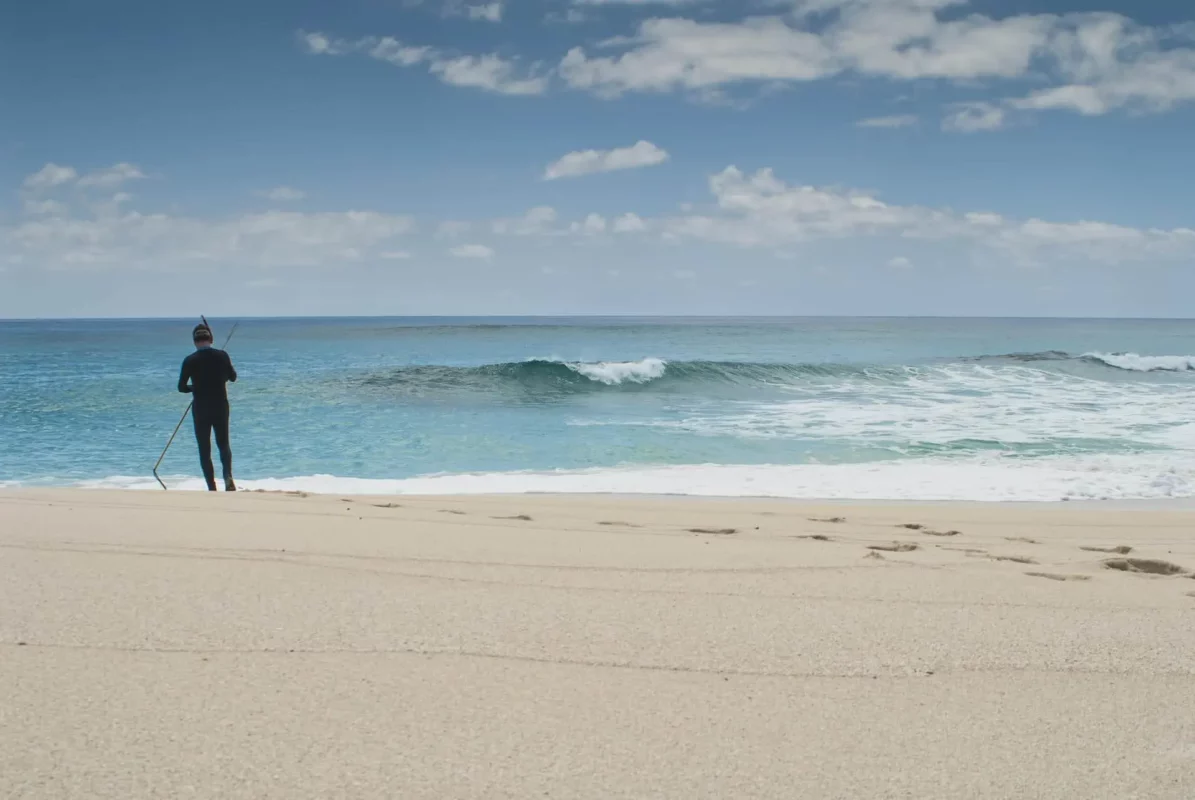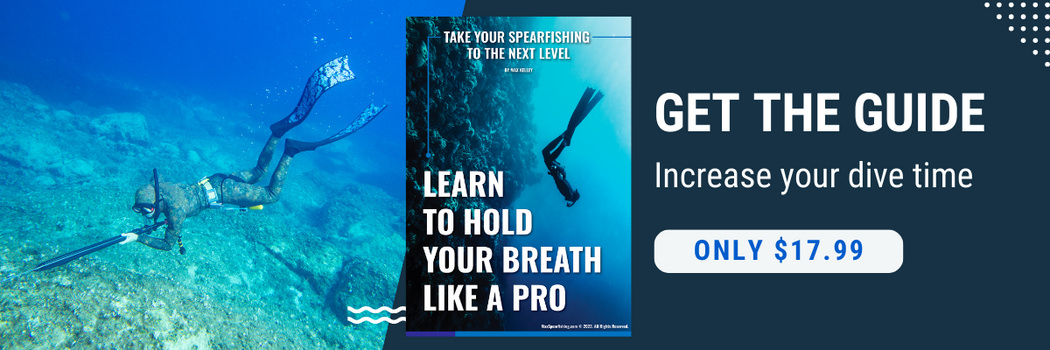No products in the cart.
Spearfishing Advice
What is Spearfishing?
When people ask me what is spearfishing, and why I love it so much, it’s hard not to share my enthusiasm.
I’ve loved the great outdoors ever since I was a kid, and spearfishing allows me to combine quite a few things that I like doing. It’s active and outdoors, it requires patience and skill, and it allows me to bring home a massive feed of fish, that we otherwise would not likely be able to afford.
But spearfishing is more than a means to provide for my family. It’s meditative, it calms me down, and armed with even just the basics, a mask, a pair of fins and a pole spear, you’ve got what you need to get out and explore the ocean.
Max Spearfishing is reader-supported. We may earn a small commission for purchases using our links. Click here to learn more.
What is Spearfishing?
Spearfishing is a type of fishing that doesn’t use a typical rod or reel. You’ve got a pole spear or a speargun used to impale a fish through the body.
Historically, spearfishing was one of the earliest fishing techniques developed, with tribes using sharpened sticks to catch fish from streams, ponds, and shallow tidal waters. Over time, spearfishing technology has advanced dramatically, allowing modern hunters to go underwater in search of prey.
The most significant innovations started after 1920, as swim goggles became popular in the Mediterranean. From there, proper diving masks and fins and snorkels emerged that would allow humans to swim effectively underwater. In the 1930s, innovations in scuba diving equipment and rebreathers assisted with spearfishing, which led to the development of the modern scuba dive equipment we know today. With time, the practice spread to America, Australia and South Africa as more people grew to love the sport.
Today, spearfishing popularity is growing incredibly fast, as it’s the most sustainable fishing technique with zero bycatch.
How do I get started spearfishing?
Once you’ve learned what is spearfishing, you need to understand how to get started.
Because, on the surface, it isn’t all that difficult to get started spearfishing. You’ll need some spearfishing gear, of course, like a pair of fins, a mask, a speargun and a good quality pair of dive gloves, at a minimum. You should also learn about breath holds and take a freediving course to understand how to push your limits underwater safely.
Covered here are some of my favourite spearfishing tips for beginners, but ultimately – you need to get in the water and practice. Get comfortable swimming in the ocean, finding and stalking a fish to target, and then lining up and taking your shot. One good way to describe what spearfishing is; is that it’s like snorkelling with a weapon. A way to get in the water with your reward for a successful hunt, being a delicious feed at the end.
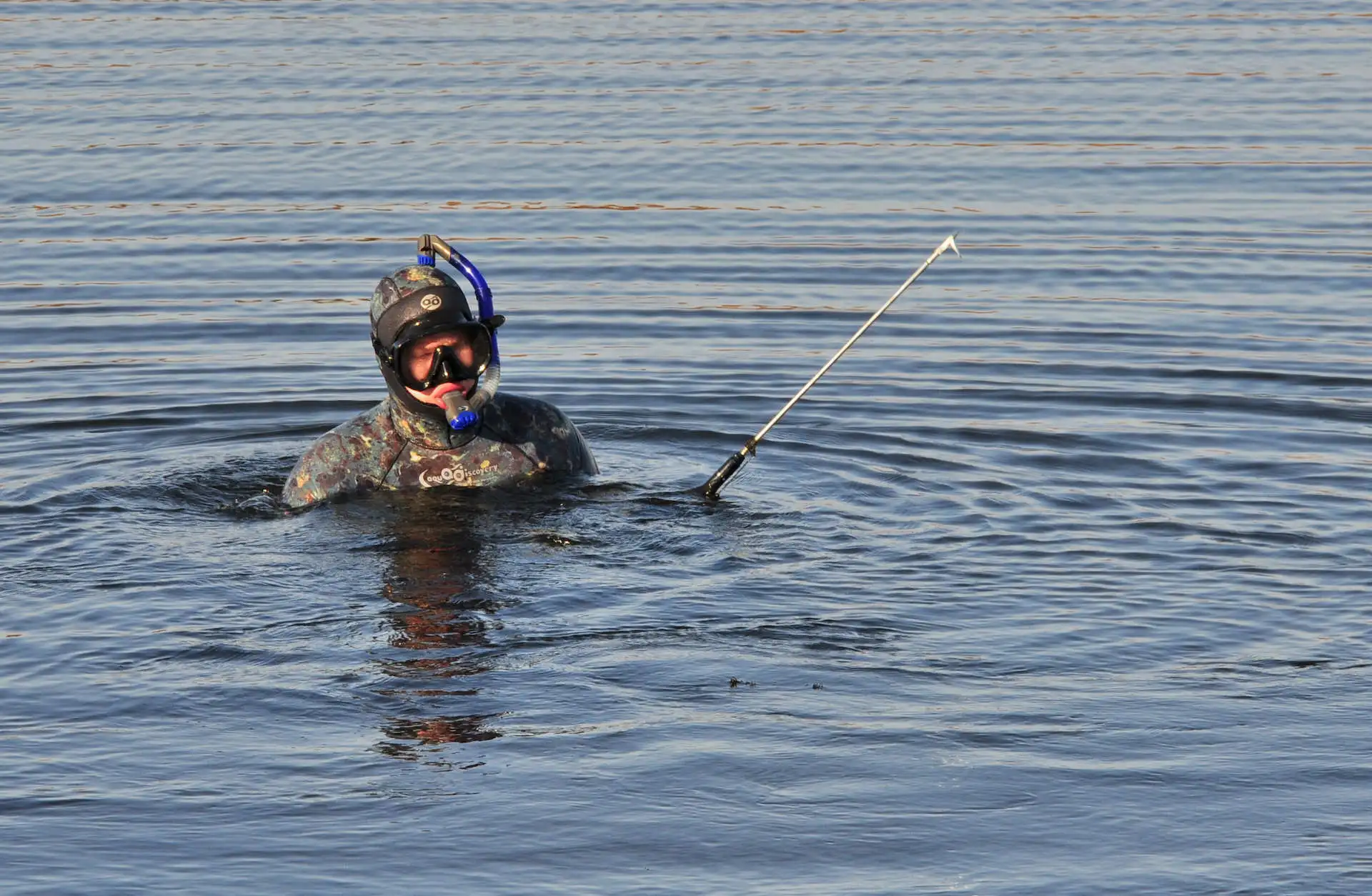
Is it easy to learn how to spearfish?
When I start explaining what is spearfishing to my friends and family who are still learning about the sport, one question that often comes up is this. Is it easy to learn?
The answer is it depends. It’s easy to get beginner spearfishing gear and swim out into the water. But hunting underwater involves quite a bit of skill. In addition to learning how to hold your breath, you’ve got to stay in complete control underwater. Making calm, relaxed movements as you patrol the water looking for a fish to spear. You need to be able to operate your speargun quickly and effectively. Be able to take aim and fire without spooking your target fish.
Anyone with good swimming ability can learn to spearfish from the surface. But it’s a sport that requires continual practice, training, and effort to become one of the best. If you’re content to be just a happy amateur like me, then yes – it’s pretty easy to get started with all the spearfishing basics.
What gear do you need for spearfishing?
Learning to spearfish requires an investment in some critical pieces of gear.
At a minimum, you’ll need to buy a snorkelling mask and a pair of dive fins. Gloves to protect your hands, and either a speargun, pole spear or Hawaiian sling. Some equipment may be prohibited depending on the area you’re spearfishing in, so check your local regulations. You may also be required to have a diver below flag and floatline for any passing boats to better spot you while spearfishing in the water.
Other equipment that will help as you figure out what spearfishing is includes a dive knife, a comfortable wetsuit, underwater flashlights, a weight belt, and a fish stringer. I cover a ton of beginner spearfishing gear and more advanced spearfishing equipment in these posts, where you’ll find my recommendations on the best products to buy (after testing all the different gear in real-world conditions).
Where can I go spearfishing?
Pretty much anywhere there is water, you’ll be able to go spearfishing.
I’ve dived in pretty much every form of water you can imagine. Crystal clear lakes. Muddy rivers with a foot of visibility. Shallow ponds chasing carp on foot. But perhaps the most common place you’ll want to spearfishing is from the shore. You walk out into the sea, exploring the rocky reefs along the ends of the beach and headlands.
In these conditions, you’ll likely be spearfishing in water from 5 to 25 meters deep (around 16 to 82 ft). I’ve found schools of fish in water so shallow there was no need to duck dive, and I have lost fish as they swam down deeper than I was comfortable chasing after them in open water. Having access to a boat will enable you to get offshore, which here on the East Coast of Australia, you’ll find big schools of yellow tail kingfish, sailfish, wahoo, and, if you’re fortunate, the elusive marlin.
What I will say about this sport, is that you’re not always allowed to spearfish in certain waters. There may be protected areas where it’s prohibited, and also certain species of fish you’re not allowed to spear. As you learn what is spearfishing all about, read up too on the legalities of spearfishing in your area.
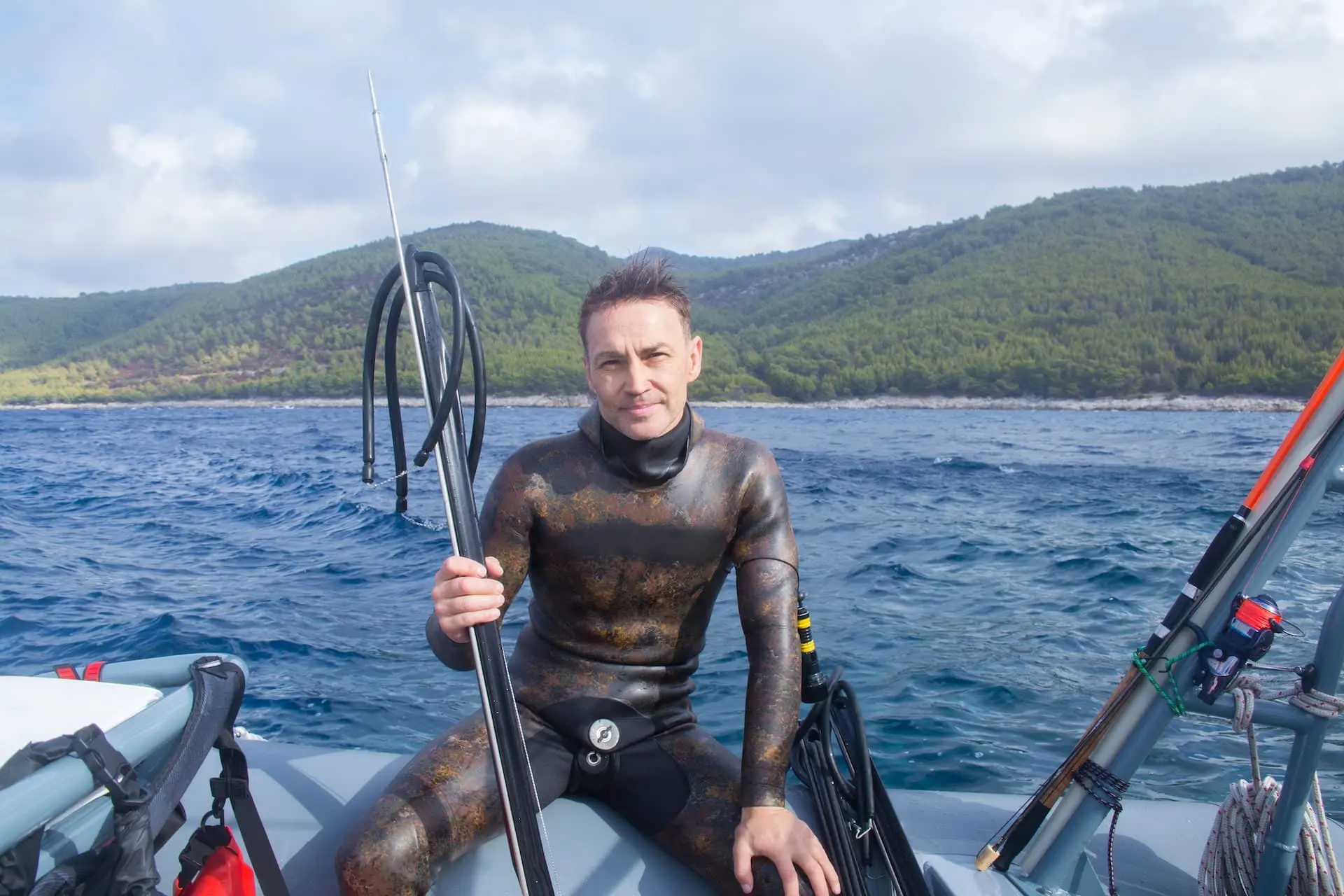
How do you train your breath for spearing underwater?
One of the most essential spearfishing techniques to learn is holding your breath. Because it’s not something that comes naturally to us.
We breathe in and out multiple times every minute. Holding your breath underwater while spearfishing is often an alien concept you need to overcome if you want to increase your underwater time. Without training, you may be able to hold your breath for 30 seconds, give or take.
Spearfishing professionals often hold their breath for 2 to 3 minutes, sometimes more. They can do this, not because they’re part fish, but because they’ve trained. Performing breath hold exercises and training techniques designed to get their body used to lower oxygen levels. In this guide, you’ll learn all the pros’ techniques and how to start your own training (from the comfort of your living room). But I do need to remind you to stay safe.
The risk of holding your breath too long is passing out from a lack of oxygen. At home, it’s likely fine. Underwater, passing out like this is known as a shallow water blackout and is deadly without a dive buddy to bring your unconscious body back to the surface. That’s why you should never go spearfishing alone.
Why do people not like spearfishing?
It’s no secret that spearfishing gets a bad rap. Because if you’ve spent any time at the beach, you’ll have come across a bonehead that’s not spearfishing the right way. Whether ignorance or a lack of care for the environment, the few idiots give the rest of us a bad name.
In general, the freedive spearfishing community is one of the world’s most environmentally conscious groups of fishermen. Spearfishing the right way generates zero bycatch. You spear what you want to eat. That’s how I practice spearfishing; no one I spearfish with thinks otherwise. Although there are people who don’t get what spearfishing is really about.
I’ve seen kids shooting lobsters with pole spears. Pulling several, undersize lobsters to shore that simply didn’t have a chance. Or how about this guy, who was all smiles after killing a protected grouper, in a no spearfishing zone. Myself, I’ll happily instruct these morons in the error of their ways, but it’s up to all of us to be ethical in our approach to spearfishing. Rules exist to protect our oceans for the generations to come, so make sure you’re doing your part to go spearfishing the right way.
Many of us, myself included, are big supporters of the charities and non-profits working to protect and conserve the seas for future generations. I want my kids to enjoy the pristine wonderland I grew up to love. They deserve the chance to experience spearfishing as well.
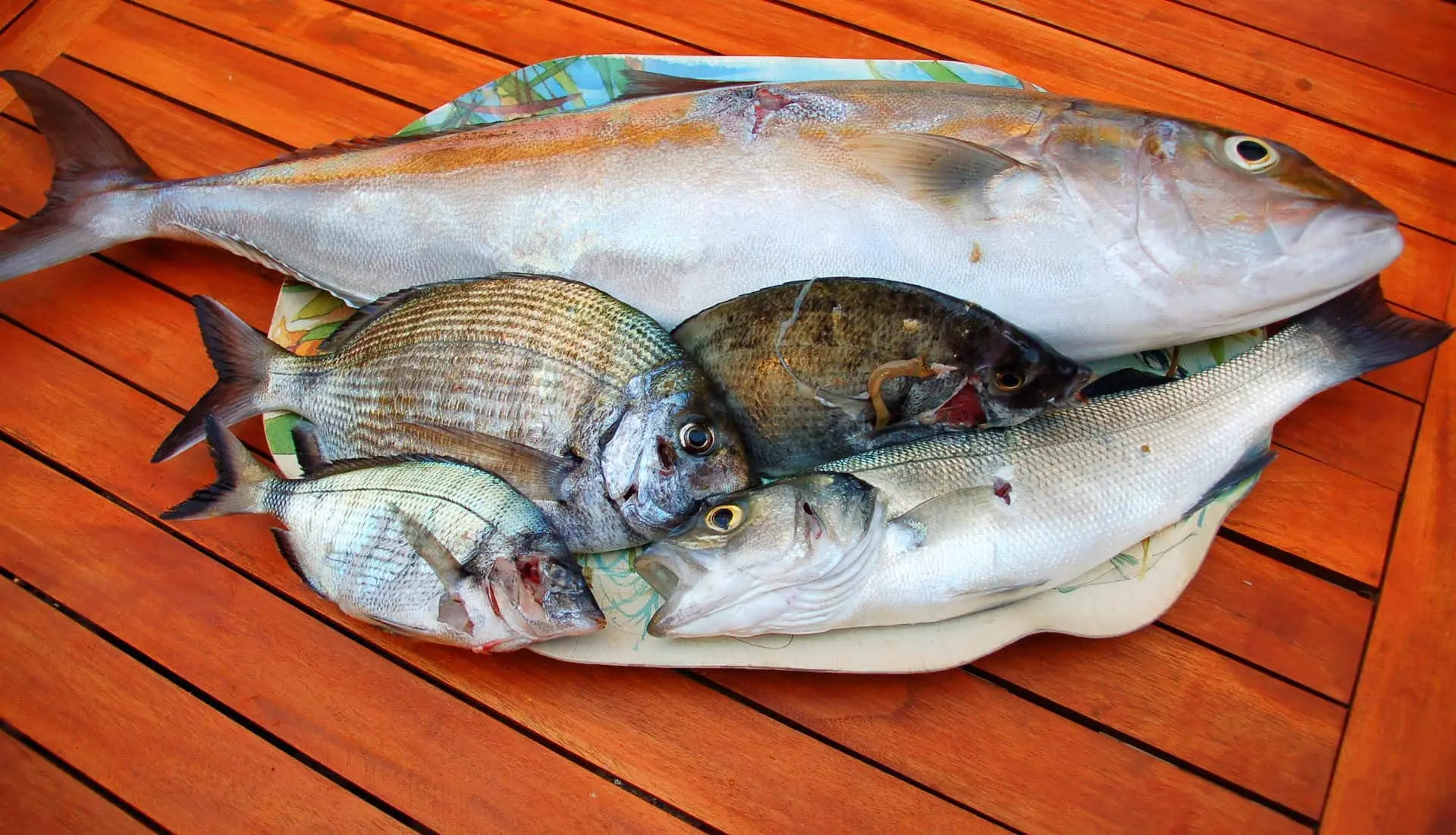
What spearfishing means to me
I grew up fishing. In a small beach town, it was one of the primary things you could do.
Many of my friend’s parents had boats, and we spent countless hours on the water. But to me, it always felt reactionary. You’ve dropped a line in and waiting for a fish to bite. If you’ve got the wrong bait, area, and depth, you’ll be heading home empty-handed. It was often dull. And that’s when I discovered spearfishing.
It started as a hobby. Today, it’s one of my biggest passions, and I’m always eager to share my latest story or adventure with my friends and family. Spearfishing allows my family to eat better, helps me stay active, and gives me an excuse to step out of the house and get some “me” time now and then. To me, spearfishing is the perfect hobby.
If you ask me what is spearfishing, my answer is that it’s the ultimate escape. A whole world waits for you just beneath the ocean’s surface. A world that so few people understand and appreciate. You’re face to face with the life you’ve never seen, and there’s action everywhere you look.
- Grouper picking through the sand.
- Lobsters peeking out from under the weed.
- Schools of fish circling just out of reach.
When you’re spearfishing, you lose sense of your everyday life. Whatever was stressing you at the office, with your family, your finances. You can let it go. Pushed to the back of your mind as you focus on the present. What’s right in front of your eyes? Your thoughts centre on your breathing and kicks; your eyes scan the water for a target.
Forget meditation. There’s nothing that puts me in the right frame of mind like going spearfishing.
Learning what is spearfishing all about
Ultimately, spearfishing allows you to slip into a world where you’re no longer top of the food chain. Struggling to chase and keep up with far bigger fish that live in an aquatic environment. There’s a thrill of the chase, and the adrenaline of pulling in a big catch of course, but it’s almost pure in the sense that you’re relying on your skills and experience to bring your dinner home. It’s fresh from the ocean, not store bought, processed and packaged from the supermarket seafood section.
Plus, it’s extremely low impact. Of course, I get this is a little contradictory.
The best possible way to not have any impact on the ocean at all is not to spearfish at all. But the way I see it, spearfishing is the least invasive, and most selective form of fishing. The damage I’ll do over a lifetime in the water, is tiny in comparison to what we’re letting commercial line fishermen and netters do to the oceans. When spearfishing I’m only ever looking for certain types of fish. Don’t shoot everything in sight. Take care with each shot, and only ever spear enough fish as your family needs.
Spearfishing is the ultimate escape, but if you’re considerate and thoughtful each time you enter the water, you’re doing a good job to ensure the sport we all love will be around for many generations to come. I know I’m far from perfect, but I do my best to make as little impact as possible.
And if you’re doing the same, I salute you.

